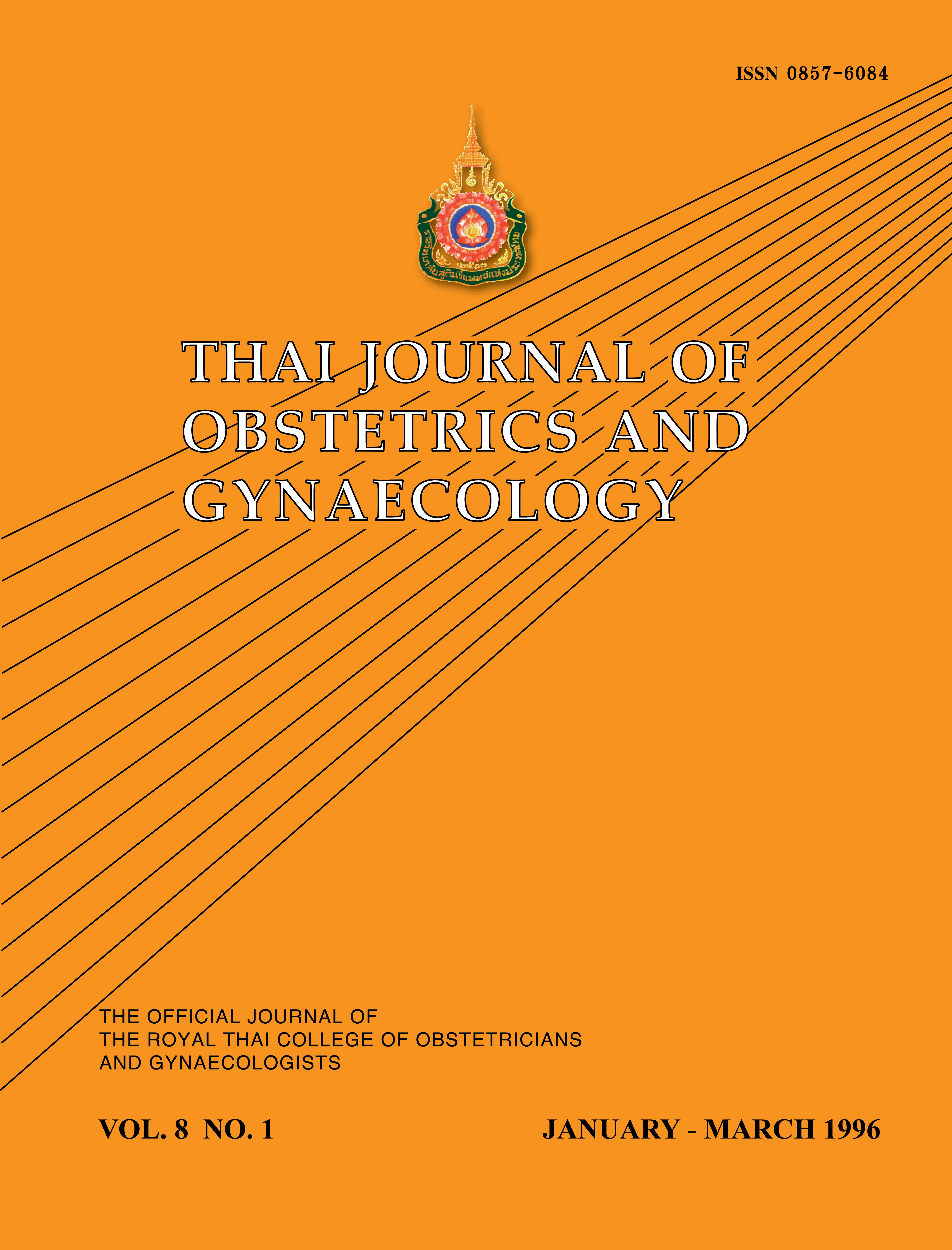Induction of Labour by Prostaglandin E2 Intracervical Gel or Vaginal Suppository
Main Article Content
Abstract
Objective To compare the effectiveness in induction of labour between prostaglandin E2 intracervical gel and vaginal suppository.
Subjects Nineteen pregnant women with unfavourable cervix (Bishop score s 5) were randomized to receive either prostaglandin E2 intracervical gel (0.5 mg) or vaginal suppository (3 mg) for induction of labour.
Main outcome measures Mode of delivery, time from initial application of PGE, unitil delivery, and adverse effect, Apgar score and immediate newborn status.
Results Caesarean section was performed in 5 out of 9 cases in intracervical gel group, comparing to 1 out of 10 cases in vaginal suppository group. The mean time of application of prostaglandins to labour (A-L) and application to delivery (A-D) in cases of successful vaginal delivery were significantly shorter in the intracervical gel than in the vaginal suppository group (A-L :1 + 0.71 hr vs 11.21 + 9.29 hr ; A-D : 13.75 +3.63 hr vs 20.48 6.74 hr, P < 0.05). The mean time from rupture of membranes to delivery was of no difference between the two groups (4.48 £ 2.46 hr vs 4.80 + 2.88 hr respectively, P = 0.85) Neither uterine hyperstimulation nor other adverse effects both to the baby and mother was detected during the labour period.
Conclusion Prostaglandin E2 vaginal suppository seemed to be simple and successful for induction of labour and delivery, though it required longer period of induction to delivery when compared to prostaglandin E2 intracervical gel.
Article Details

This work is licensed under a Creative Commons Attribution-NonCommercial-NoDerivatives 4.0 International License.


